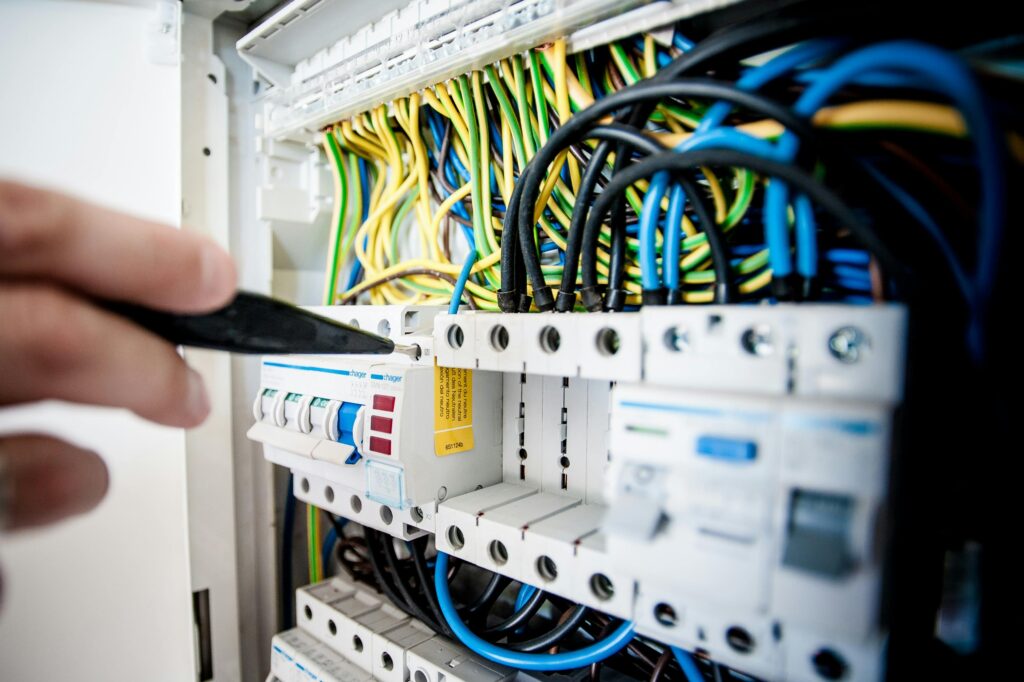What is Predictive Maintenance?
Predictive maintenance is a strategy that uses data analysis and monitoring tools to predict when equipment will fail, allowing maintenance to be performed just before failure occurs. This approach reduces downtime by up to 70% and maintenance costs by 25% compared to reactive maintenance.

Executive Summary
Installing predictive maintenance systems correctly is crucial for success in industrial equipment monitoring. This comprehensive guide covers wireless vibration sensor installation, gateway setup, and best practices for industrial environments. Following these predictive maintenance implementation steps will maximize sensor effectiveness, ensure reliable data collection, and deliver expected ROI from your maintenance program.
Why Predictive Maintenance Installation Matters
Predictive maintenance transforms industrial equipment management by:
- Reducing unplanned downtime by 35-45%
- Extending asset lifecycles by 20-40%
- Optimizing maintenance scheduling and resource allocation
- Preventing catastrophic equipment failures before they occur
- Improving overall equipment effectiveness (OEE) by 15-30%
However, poor installation practices cause 60% of predictive maintenance program failures. Even advanced analytics cannot compensate for inadequate hardware installation that compromises data quality and network reliability.
Essential Components of Predictive Maintenance Systems
Wireless Vibration Sensors
- Detect mechanical imbalance, misalignment, and bearing wear
- Monitor rotating equipment health continuously
- Provide real-time vibration data for analysis
Industrial IoT Gateways
- Transmit sensor data to analysis platforms
- Enable wireless connectivity in harsh environments
- Support multiple communication protocols
Data Analytics Platform
- Process vibration data using AI and machine learning
- Generate predictive maintenance alerts
- Provide actionable maintenance recommendations
Step-by-Step Predictive Maintenance Installation Guide

Phase 1: Site Survey and Deployment Planning
What is a predictive maintenance site survey? A site survey identifies optimal sensor locations, assesses wireless connectivity requirements, and documents equipment specifications before installation begins.
Site Survey Checklist:
- Map radiofrequency (RF) coverage areas
- Identify potential wireless interference sources
- Document machine operating characteristics (temperature ranges, vibration profiles)
- Locate optimal mounting positions with clear line-of-sight to gateways
- Assess environmental factors (temperature extremes, humidity, dust exposure)
- Collect equipment metadata for the AI system context
Documentation Requirements:
- Machine-specific mounting instructions with photos
- Sensor placement diagrams for each equipment type
- Gateway location maps with coverage zones
- Installation checklists for technicians
- Equipment specification database
Phase 2: Vibration Sensor Mounting Best Practices
How to mount vibration sensors correctly:
Proper sensor mounting is critical for accurate vibration data collection in predictive maintenance programs. Poor mounting reduces data quality by up to 80%.
Surface Preparation Steps:
- Remove paint, rust, oil, and debris from mounting surfaces
- Machine surfaces are flat when necessary
- Apply appropriate surface primers for adhesive applications
- Ensure surface roughness meets manufacturer specifications
Mounting Method Selection:
Epoxy Mounting (Most Common):
- Best for permanent installations requiring high-frequency response
- Use only certified epoxies resistant to harsh industrial conditions
- Provides an uninterrupted vibration transmission path
- Suitable for frequencies up to 2 kHz
Threaded Stud Mounting (Critical Applications):
- Essential for high-frequency data collection (above 2 kHz)
- Provides the most rigid connection to equipment
- Recommended for critical rotating machinery
- Requires machined mounting surfaces
Magnetic Mounting (Temporary Monitoring):
- Quick installation for temporary monitoring
- Limited to frequencies below 1 kHz
- Not suitable for permanent installations
- Good for initial equipment assessment
Optimal Sensor Placement:
- Mount as close as possible to vibration sources
- Install directly on bearing housings when possible
- Maintain consistent orientation across similar equipment
- Follow equipment manufacturer recommendations
- Ensure a rigid, stable connection to monitored assets
Phase 3: Industrial Gateway Installation
Gateway Positioning Strategy:
- Install at heights between 3 and 15 feet above floor level
- Maintain a clear line of sight to sensors when possible
- Use directional antennas in challenging RF environments
- Consider redundant gateways for critical applications
- Position away from electrical interference sources
Gateway Protection and Security:
- Mount in NEMA-rated enclosures appropriate for the environment
- Secure all cables with proper strain relief
- Label all connectivity devices clearly
- Implement cybersecurity best practices
- Use surge protection for power connections
Network Connectivity Validation:
- Conduct signal strength tests at each sensor location
- Verify data transmission across the entire network
- Document baseline signal metrics for troubleshooting
- Test failover capabilities for redundant systems
- Validate data integrity throughout the transmission path
Phase 4: System Documentation and Verification
Documentation Requirements:
- Record actual sensor locations, orientations, and mounting methods
- Document gateway positions and coverage maps
- Maintain firmware and software version information
- Create network configuration documentation
- Establish baseline performance metrics
End-to-End System Verification:
- Confirm data flows from sensors to the analysis platform
- Validate alarm and notification systems
- Test user interface functionality
- Verify data accuracy and completeness
- Document system performance benchmarks
Common Predictive Maintenance Installation Mistakes to Avoid
- Inadequate surface preparation reduces data quality by 50-80%
- Poor sensor orientation causes inconsistent data across equipment
- Insufficient wireless coverage leads to data gaps and false alarms
- Lack of environmental protection – shortens hardware lifespan
- Incomplete documentation makes troubleshooting difficult
- Skipping system validation results in unreliable monitoring
Predictive Maintenance ROI Calculator
Typical ROI Factors:
- Maintenance cost reduction: 20-25%
- Downtime reduction: 35-45%
- Asset lifespan extension: 20-40%
- Energy efficiency improvement: 10-15%
- Safety incident reduction: 30-50%
Payback Period: When properly installed and implemented, most industrial predictive maintenance systems achieve ROI within 6-18 months.
Frequently Asked Questions
How long does predictive maintenance installation take? Installation typically takes 2-4 weeks for a facility with 50-100 monitoring points, depending on complexity and equipment accessibility.
What industries benefit most from predictive maintenance? Manufacturing, oil and gas, power generation, mining, and chemical processing industries see the highest ROI from predictive maintenance programs.
How many sensors do I need for effective monitoring? Generally, 1-3 sensors per critical rotating asset, with sensors depending on equipment complexity and criticality.
What’s the difference between predictive and preventive maintenance? Predictive maintenance uses real-time data to predict failures, while preventive maintenance follows scheduled intervals regardless of equipment condition.
Critical Mistakes to Avoid: The “Don’ts” of Predictive Maintenance Installation
Avoiding common pitfalls is just as important as following best practices. Here are the critical mistakes that can sabotage your predictive maintenance program:

Planning and Preparation Mistakes
DO NOT: Skip Site Surveys
Why this matters:
Inadequate planning leads to suboptimal sensor placement and system performance issues that compromise your entire predictive maintenance program.
Critical consequences:
- Suboptimal sensor placement reduces fault detection accuracy by 40-60%
- Overlooked interference sources cripple wireless communication reliability
- Poor documentation creates ongoing maintenance and troubleshooting challenges
- Inconsistent deployment approaches create data quality issues
Best practice:
Conduct comprehensive site surveys, including RF interference mapping, structural analysis, and environmental assessment, before equipment deployment.
DO NOT: Use a One-Size-Fits-All Approach
Why this matters:
Each machine type has unique monitoring requirements that demand customized approaches for optimal results.
Technical reality:
- Each machine type has unique monitoring requirements and failure modes
- Sensor placement should reflect specific failure modes and critical fault frequencies
- Alert thresholds must consider normal operating parameters for each asset type
- Monitoring strategies require calibration to equipment-specific characteristics
Best practice:
Develop equipment-specific monitoring protocols based on failure mode and effects analysis (FMEA) and manufacturer specifications.
Sensor Mounting Mistakes
DO NOT: Mount Sensors on Inappropriate Surfaces
Surfaces to avoid:
- Thin sheet metal, covers, or guards that cause signal attenuation
- Flexible conduit or cable trays that introduce measurement artifacts
- Surfaces with temperatures outside sensor specifications (-40°C to +85°C typical)
- Loose, damaged, heavily corroded, or unprepared surfaces
Technical requirement:
Mount directly on solid, structural surfaces with direct load paths to ensure accurate vibration measurement and reliable data collection.
DO NOT: Compromise Mounting Integrity for Convenience
Common mistakes:
- Using temporary adhesives for permanent installations
- Installing in locations accessible only during shutdowns
- Sacrificing mounting security to save installation time
- Failing to consider future maintenance access needs
Best practice:
Plan permanent mounting solutions that balance measurement accuracy, installation practicality, and long-term maintenance accessibility.
DO NOT: Neglect Orientation Consistency
Impact on data quality:
- Inconsistent orientation creates data comparison challenges
- Different mounting methods on similar equipment introduce measurement variability
- Varied sensor positioning across identical machines prevents cross-asset correlation
- Inconsistent placement compromises trend analysis capabilities
Best practice:
Establish standardized mounting procedures with consistent orientation, axis alignment, and comprehensive documentation protocols.
Gateway Installation Mistakes
DO NOT: Place Gateways in Problematic Locations
Locations to avoid:
- Areas with high electromagnetic interference that disrupt wireless communication
- Near large metal structures that block RF signals and create dead zones
- Locations with extreme temperatures that exceed equipment specifications
- Areas where physical damage is likely, threatening hardware integrity
Optimal placement strategy:
Position gateways with a clear line-of-sight to sensor clusters while maintaining environmental protection and network access.
DO NOT: Underestimate Power and Network Requirements
Power requirements:
- Don’t rely on unstable or shared power sources
- Avoid locations with poor network connectivity
- Never skip surge protection in industrial environments
- Plan for power consumption scaling with network growth
Network considerations:
Ensure reliable internet connectivity with adequate bandwidth, implement redundant network paths for critical installations, and plan for future system expansion requirements.
Network Configuration Mistakes
DO NOT: Set and Forget Network Parameters
Configuration optimization:
- Avoid excessive data transmission frequency that drains battery life unnecessarily
- Ensure the right balance between battery consumption and required data input
- Never leave default security settings in place
- Regularly review and optimize parameters based on operational experience
Best practice:
Implement dynamic network parameter adjustment based on asset criticality, operational requirements, and system performance metrics.
DO NOT: Implement Without Considering Network Capacity
Capacity planning requirements:
- Don’t exceed gateway capacity limits (typically 50-100 sensors per gateway)
- Avoid overwhelming network bandwidth with excessive data transmission
- Don’t neglect scalability requirements for future system expansion
- Plan for server processing capacity and historical data storage needs
Best practice:
Conduct thorough capacity planning for current requirements and future growth projections.
Ongoing Management Mistakes
DO NOT: Make Undocumented Changes
Documentation requirements:
- Don’t relocate sensors without updating documentation and positioning records
- Ensure all sensor replacements respect the original mounting position for consistency
- Maintain configuration change logs with performance impact assessment
- Document calibration records and baseline signature updates
Best practice:
Implement change management procedures requiring documentation approval before system modifications.
Essential Elements for Long-Term Success
Beyond proper installation, several other factors contribute to predictive maintenance program success:

Data Quality Management
Implementation requirements:
- Implement automated data quality monitoring systems
- Establish regular data validation procedures and integrity checks
- Create clear protocols for handling missing or corrupted data
- Document baseline signatures for all monitored equipment
Team Training and Development
Training requirements:
- Provide awareness to all plant personnel about the system
- Train maintenance personnel on system capabilities and limitations
- Develop in-house expertise for basic troubleshooting and system management
- Create clear roles and responsibilities for program management
Integration with Maintenance Workflows
Integration requirements:
- Align alert thresholds with maintenance response capabilities
- Create clear escalation paths for different alarm types and severity levels
- Integrate findings with CMMS and work order systems
- Develop standard operating procedures for common fault types
Continuous Improvement
Improvement framework:
- Regularly validate system effectiveness through key performance indicators
- Track and analyze false positives and negatives to refine alert thresholds
- Document successful fault predictions and failure catches
- Refine thresholds and monitoring strategies based on operational outcomes
Conclusion: Maximizing Predictive Maintenance Success
Successful predictive maintenance implementation depends on following best practices and avoiding critical mistakes. The “Do Nots” outlined in this guide help organizations establish a solid foundation for their condition-based and predictive maintenance programs.
Remember that installation is just the beginning—ongoing management, continuous improvement, and integration with broader maintenance strategies are equally crucial for long-term success. A well-designed and properly installed monitoring system delivers reliable data that drives informed maintenance decisions, reduces unplanned downtime, and provides measurable ROI.
At Skyler, we guide customers through every step of their predictive maintenance journey, ensuring long-term success with our IoT-driven reliability solutions.
About Skyler – Industrial Predictive Maintenance Solutions
Skyler prevents downtime and reduces maintenance costs through advanced IoT-driven reliability solutions. We specialize in maximizing rotating asset lifespan using AI, machine learning, and deep industry expertise. Skyler Rotate bridges the gap between raw data and actionable maintenance solutions.
Backed by industry leaders Energy Management Corporation, HECO Inc., Northwest Electric, and Electrical Apparatus Service Association (EASA) members, Skyler delivers proven predictive maintenance results.
Contact us today to start your predictive maintenance journey and achieve measurable ROI within 6-18 months.

